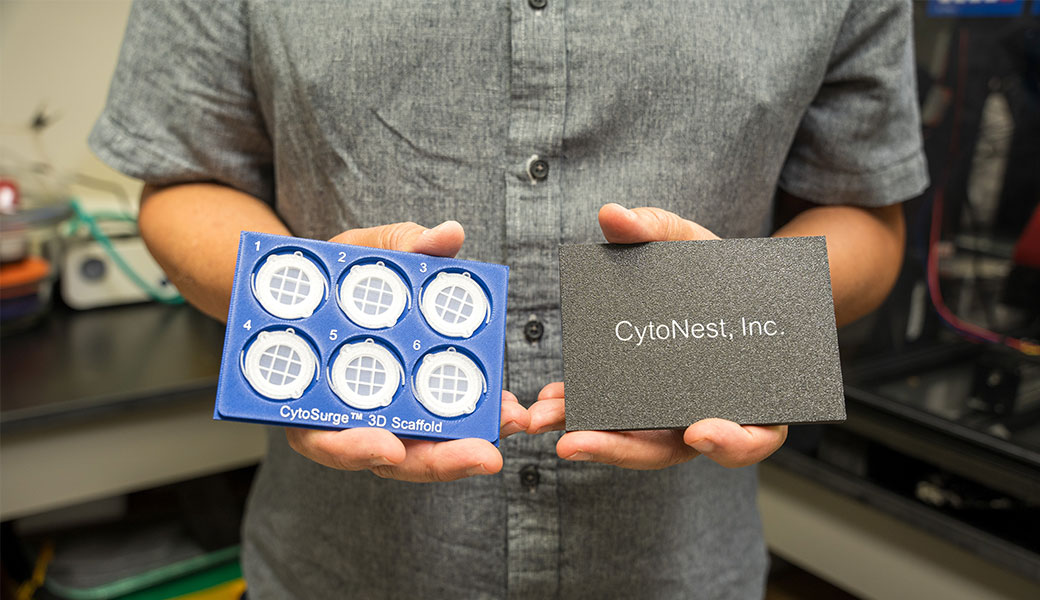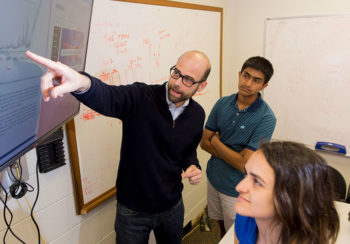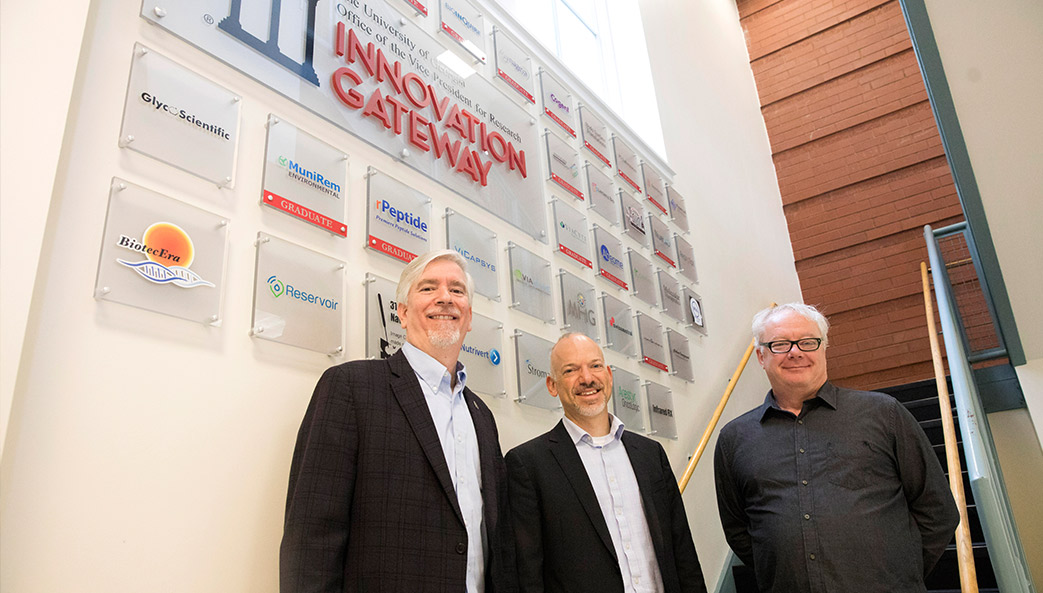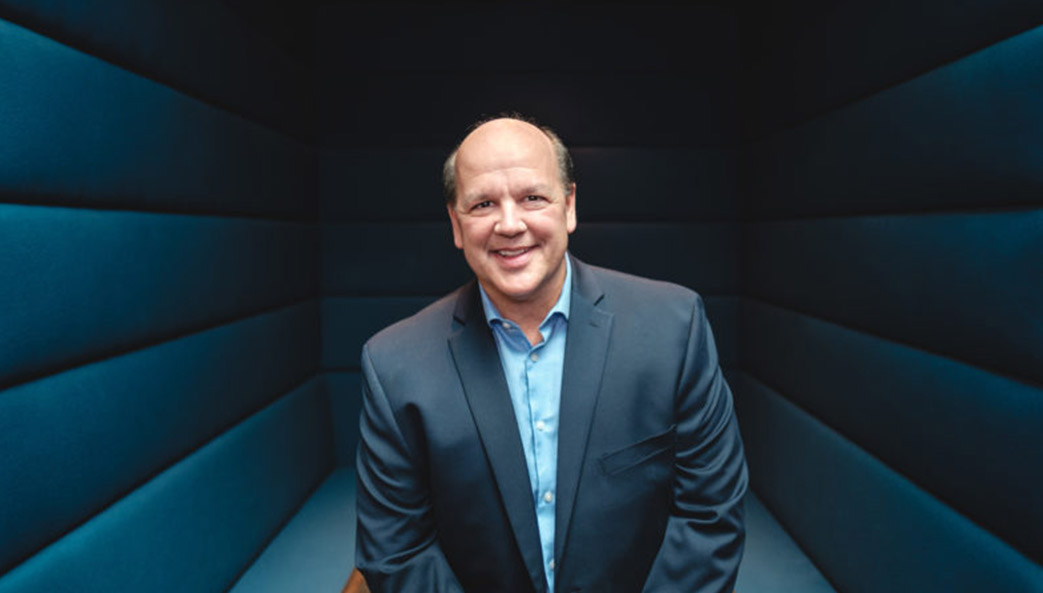University of Georgia startup CytoNest Inc. released its first commercial product, a fiber scaffold that optimizes cell manufacturing and tissue engineering, last month.
The product, called CytoSurge 3D fiber scaffold, has applications in cell research, biopharmaceuticals, cell therapeutics, and cultured meat and seafood development.
UGA is ranked No. 1 among U.S. universities for number of commercial products to market based on its research, according to an annual survey conducted by AUTM. The university has seen over 1,200 products make it to market.
“Congratulations to CytoNest on launching their first product and adding to UGA’s legacy of translating research discoveries into products,” said Derek Eberhart, UGA’s associate vice president for research and executive director of Innovation Gateway, UGA’s technology transfer organization. “For the past eight years, UGA has ranked either first or second among U.S. universities for new products brought to the market by companies like CytoNest.”
CytoSurge 3D fiber scaffold also has applications in meat, seafood production
Nataraja Yadavalli and Sergiy Minko, CEO and CSO of CytoNest, respectively, are the minds behind the new product, an edible fiber-based scaffold safe for living tissues that provides a point of contact for cells to adhere to and grow three-dimensionally in high densities. This provides a scaleable solution to those working on cultiviated meat and seafood.
After nearly a decade of research, publications and patenting, Minko and Yadavalli optimized the technology and built a working prototype in 2019.
The scaffold’s fibers are made from generally recognized as safe (GRAS) materials and formed into individual ultra-long strands through CytoNest’s proprietary fiber drawing technology. They are then fused or overlaid on top of each other to create one layer of the scaffold. With the addition of spacers and more fiber layers, a multilayered, 3D scaffold is formed to which cell cultures can attach and grow.
These edible scaffolds have use in commercial-scale production of different kinds of adherent cells, as well as cultivated meat and seafood products. Using these scaffolds helps the cells build a structure that mimics the way real meat grows, including how nutrients flow through it. The new product could allow for the production of whole-cut meats, like fish fillets, at scale, furthering a budding industry.
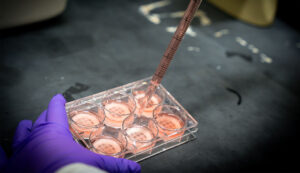
Graduate, undergraduate students, postdocs helped develop technology
Yadavalli developed the breakthrough technology for creating nanofiber scaffolds using the new fiber-spinning method as a postdoctoral fellow in Minko’s lab.
Through research and development on its prototype, CytoNest learned that current commercial nanofiber fabrication technologies are limited to older electrospinning technology.
“That is when we realized the potential of our touch-spun technologies at commercial scale,” said Yadavalli, now a senior research associate in UGA’s Complex Carbohydrate Research Center.
Minko credits the hard work and dedication from postdocs, and graduate and undergraduate students in his lab for the breakthrough.

“At that time, Alex Tokarev, a postdoctoral fellow in my lab, was very enthusiastic about this direction. He made a major breakthrough in the development of the new nanofiber spinning technology,” said Minko, Georgia Power Professor of Fiber and Polymer Science in the College of Family and Consumer Sciences. “Many graduate and undergraduate students were also involved and helped in these developments. These combined efforts and successful developments were very inspiring.”
Minko and Yadavalli were able to investigate the commercial potential for their product through Innovation Gateway’s NSF I-Corps program. After two sessions of its customer-discovery program, they decided to start CytoNest Inc.
Support from GRA, NSF, UGA key to bringing product to market
Bringing products to the market is not an easy task.
But through grants from the Georgia Research Alliance, the Good Food Institute and the U.S. Department of Agriculture, CytoNest has been able to acquire the necessary tools, lab space, equipment and services needed to make these advancements and release their first product to the marketplace.
“It is impossible to underestimate the help and support of UGA, NSF I-Corp, Innovation Gateway and the Georgia Research Alliance, which were critical to establishing and shaping the startup company,” Minko said.
This work was supported by the United States Department of Agriculture, National Institute of Food and Agriculture, USDA/NIFA under Award 2023-51402-39329. Any opinions, findings, conclusions, or recommendations expressed in this publication are those of the author(s) and should not be construed to represent any official USDA or U.S. Government determination or policy.



